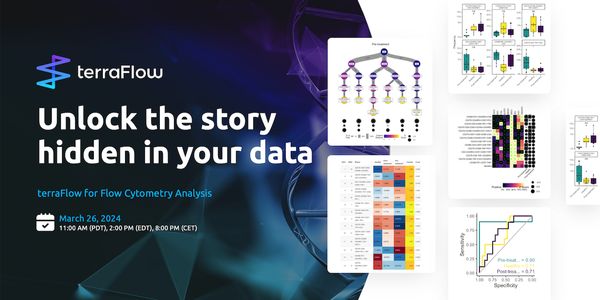Scientist at the DLR (German Aerospace Center), Institute for Planetary Research
BIOGRAPHY

Speakers
-
Colin Coates, PhD
Research Product Manager, AndorBIOGRAPHY
Event Date & Time
DATE: June 18, 2019
TIME: 9:00am PDT, 12:00pm EDT, 5:00pm BST
Abstract
In the Atacama desert, Chile, twelve small aperture telescopes are observing the southern sky since 2016. Combining the optimal weather conditions of the observing site with the high sensitivity CCD detector and very precise alignment of the mounts, the survey is able to detect super-Earth- and Neptune-sized planets around nearby stars. In 2018 the first planets discovered by NGTS have been published, including a hot Neptune, orbiting a K-dwarf star. Within our survey we measure the brightness of hundreds of thousands of stars over several months. This data is not only interesting for the search for transiting exoplanets but is also a treasure in regards to stellar variability.
Observations of thousands of stars over hundreds of nights with such high photometric precision and short cadence is unprecedented. For example the data has been used to look for stellar flares and allows insights into the structure of flares on short timescales. First data in form of light curves of two hundred thousand stars, are now publicly available over the archive of the European Southern Observatories (ESO).
Andor’s iKon CCD series is in high demand especially within the exoplanet community, which perform exoplanet searches and follow-up characterization studies. This is due to, for example, the cameras ideal suitability to operate in remote observing locations (e.g., no vacuum repumping necessary, in-field replaceable shutter) and the availability of a sensor option with extended NIR sensitivity. The latter is important especially for observations of cool stars. The Next Generation Transit Survey (NGTS), a dedicated search for exoplanets, is a great example for an on-going observational astronomy project involving Andor iKon-L CCD cameras. NGTS is comprised of 12 fully robotic 20cm telescopes, each equipped with custom-designed iKon-L CCDs providing exoplanet observations in the 600-900 nm wavelength band. At Andor, we are proud that the capabilities and characteristics of the iKon CCD series can contribute to the discovery of planets with sizes smaller than Neptune, which is a crucial step towards finding a possible Earth-twin in the future.
Learning Objectives:
- Learn about the NGTS instrument set-up
- NGTS data products and how to access NGTS data
- Scientific background on exoplanets and transiting exoplanets in particular
- Scientific results of the NGTS survey
LabRoots is approved as a provider of continuing education programs in the clinical laboratory sciences by the ASCLS P.A.C.E. ® Program. By attending this webinar, you can earn 1 Continuing Education credit once you have viewed the webinar in its entirety.
You May Also Like
OCT 24, 2023 | 10:00 AM
Dynamic changes in chromatin drive gene expression programs during cellular development and contribute to pathological changes underlying disease. To date, efforts to characterize chromatin...
MAR 26, 2024 | 7:00 PM
C.E. CREDITS
The implementation of a preemptive pharmacogenomics (PGx) program in a hospital setting requires a multidisciplinary approach to ensure seamless integration of each stage of the process for...
Speaker:
Steven Melnick. Ph.D., M.D.
, Dr. David Mancuso, Pharm.D. CPh , MSPM
Sponsored By: Thermo Fisher Scientific
MAR 26, 2024 | 8:00 AM
C.E. CREDITS
The implementation of a preemptive pharmacogenomics (PGx) program in a hospital setting requires a multidisciplinary approach to ensure seamless integration of each stage of the process for...
Speaker:
Steven Melnick. Ph.D., M.D.
, Dr. David Mancuso, Pharm.D. CPh , MSPM
Sponsored By: Thermo Fisher Scientific
FEB 08, 2024 | 10:00 AM
High-content screening (HCS) is an imaging-based, multi-parametric strategy used in drug development that generates rich datasets through multiplexing strategically chosen fluorescent dyes a...
Join our webinar to discover how automated sample preparation can free your lab from the time-consuming, costly, and complex manual workflows in proteomics. In the ever-evolving field of pro...
MAR 26, 2024 | 11:00 AM
Ever wonder what you’re missing in your data? The sheer complexity of today’s flow and mass cytometry datasets demands automated solutions. Machine learning plugins only provide...
Loading Comments...
Please update your information
Certificate of Attendance
Thank you for choosing Labroots. Please note that a Certificate of Attendance does NOT count towards Continuing Education Credits.
DOWNLOAD CERTIFICATE
DOWNLOAD CERTIFICATE
You must watch the entire webinar to receive your certificate of attendance.
You must attend the event before receiving your certificate of attendance.
You must register for the event first.
Certificate is no longer available for this event.
You must be logged in to retrieve your certificate.
Finish Registering
Attendees
-
APR 30, 2024Immuno-Oncology Virtual Event Series 2024
-
MAY 07, 20243rd International Biosecurity Virtual Symposium
-
JUN 06, 2024The Future of Scientific Conferencing
- See More
-
APR 19, 2024
-
APR 19, 2024
- See More













































